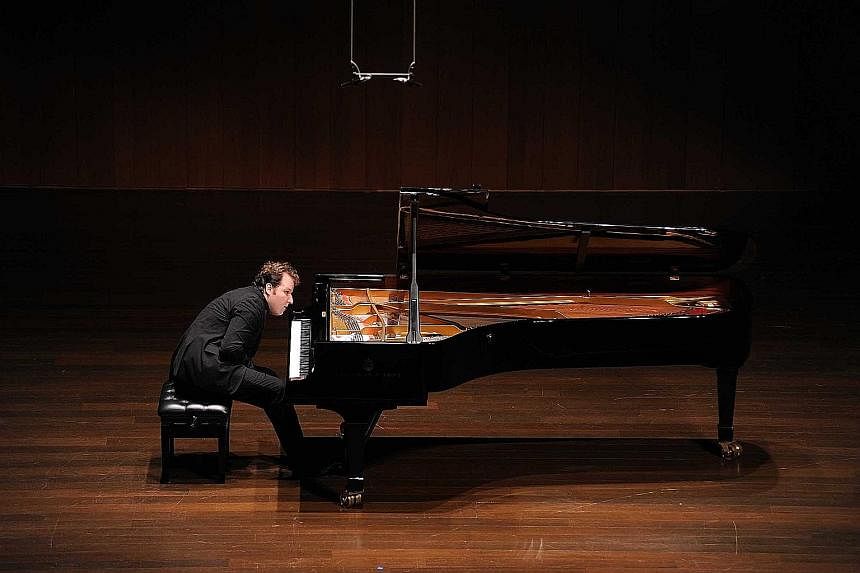Review Concert
LUKAS VONDRACEK
Victoria Concert Hall/Sunday
The 22nd edition of the Singapore International Piano Festival, themed Romantics And Nationalists, came to an end on Sunday after four nights of sparkling performances which reaffirmed its reputation as the premier festival of its kind in the region.
Closing the series was Czech pianist Lukas Vondracek who, at 23, joins a growing list of pianists making their mark on the concert circuit. If his recital was an accurate reflection of his artistry and capabilities, it would not be long before his name reaches all corners of the world.
He launched into Brahms' epic Piano Sonata No 3, Op 5. Gripping the audience from the start with its declamatory octaves, he held it spellbound with his extensive array of articulation and in doing so, made the five-movement symphonic work for the piano sound larger than life.
His daring periods of repose in the slower movements conveyed ethereal moments of self- communion, which brought out the striking fleet- footed rhythmic punctuations in the Scherzo with aplomb.
The entire second half of his programme was dedicated to composers of his native country, the Czech republic, and truly showed his masterful grasp of their nationalistic idiom.
The jaunty dances of his selection from four of Smetana's Czech Dances Book 2 were depicted with startling vividness.
Littered with traditional Czech influences, the rhythmic spring of No. 1 (Furiant), No. 5 (Cilbulicka) and No. 10 (Skocna) were contrasted immaculately with the more graceful No. 5 (Hulan).
Josef Suk's Love Song, from his Op 7 Pieces For Piano, served as a diary of the composer's courtship of his beloved Otilie, daughter of the great Czech composer Antonin Dvorak. Although more overtly expressive than his romantic contemporaries, it was nevertheless more personal. Vondracek took special care to never linger more than necessary and his ingenious use of pedals created a holoscopic sonority over which the heartfelt melody could sing and soar.
While Smetana's work was a more conventional approach to Czech folkdances and folksongs, Martinu's Three Czech Dances, H. 154 brought to mind a drug-infused rave party from the early 20th century.
The fiendishly difficult cross rhythms and unexpected accents were no match for Vondracek's supreme control, and the Obkorocak (Stepping Dance), Dupak (Samping Dance) and Polka were an outright joyful ruckus. It was in these pieces that the pianist's almost manic personality was served to great purpose, as lesser artists would have found it impossible to sustain the mania required of the music.
It would be impossible to characterise Vondra- cek's artistry, such was his vast range of style and emotions.
But what is clear is that he is a master of creating layers of perfectly voiced textures, never daunted by the delicate or fanfare, qualities which were on full display in his glittering encore of the 1st movement from Mozart's Piano Sonata In C major, K. 330.

